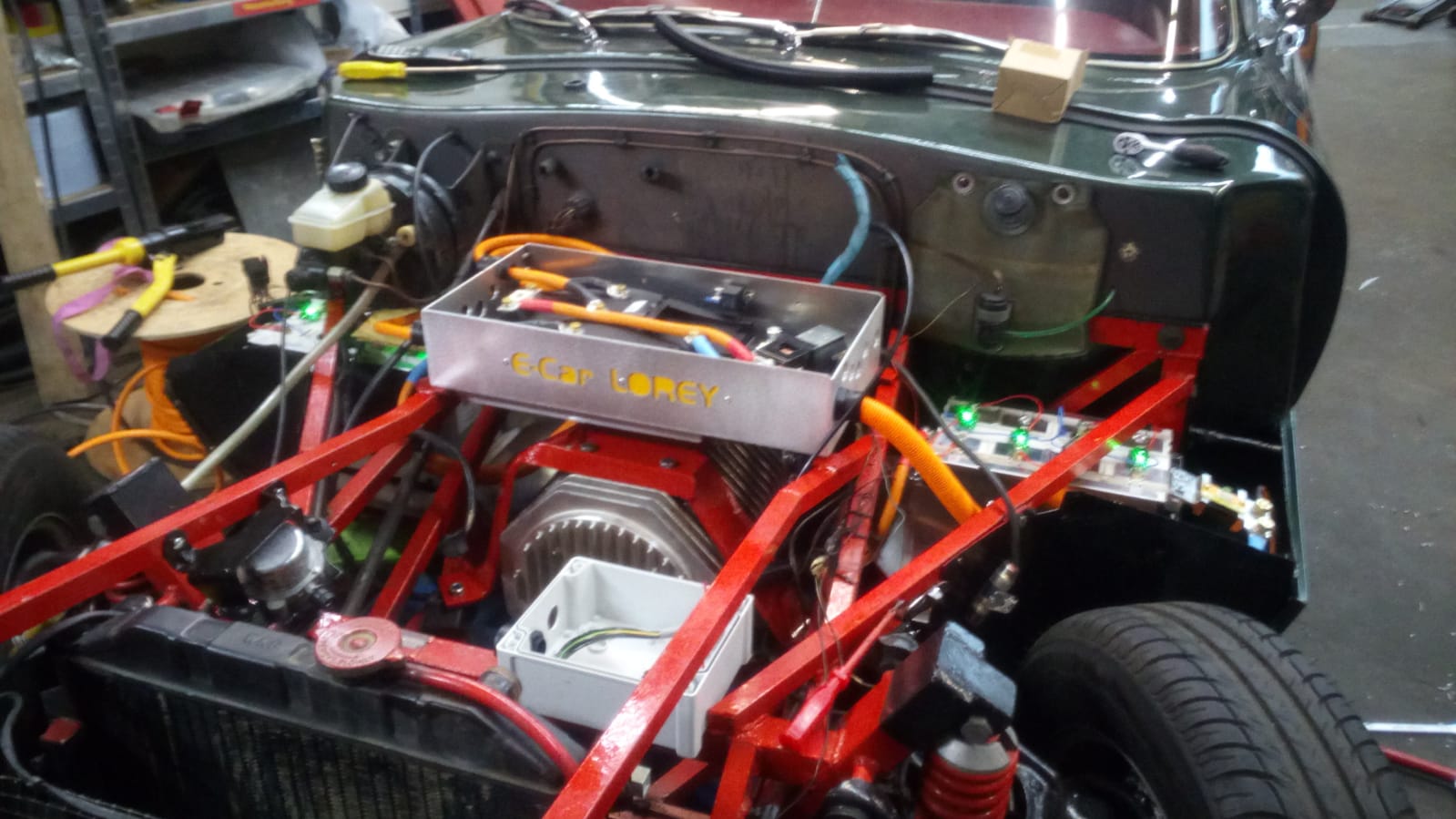Marco's Build Page The first EV Wildcat (probably)
Here is the story about electrifying the JPR Wildcat!
I am Marco from Germany and I have owned this wildcat since 2 years.
When I bought the car it had a Pinto engine. I bought it with the aim to convert it to an electric vehicle.
Now, after 2 years of working on it, I have finished the build. The car is now fully electric, it has an mot and it is a really fun car to drive.

After two years of work, here is the finished article
On the outside, the car looks like any Wildcat, but underneath it's a different beast.
Instead of petrol and pistons it's electrons and lithium powered.

Motor Installation
Here is the electric Motor being lifted into place. It's a 3 phases AC motor with 80 kw peak from Linde. Prior to this I took the car apart and repainted and restored everything before converting it.

Motor in place
The motor is directly connected to the original gearbox used with the Ford Pinto.
This means you can change gears, but there is no need as it has perfect Performance in the third gear going from 0 - 180 km/h / 110 mph. Following this the car was MOT'd during June 1991. New wheels and tyres were fitted as well as sound deadening felt etc.

A boot full of Batteries
The batteries are mainly located where the old petrol tank was.
The batteries are LiFePo (lithium Iron phosphate). I have used 33 Cells with each being 280 a/h. This equates to a total Capacity of 30 Kw/h.
It has a self designed battery managing system.
With the 30 kwh lithium Battery I get a range of about 200 km / 125 miles.

More Batteries
Not all the batteries are in the boot. I placed 12 cells just behind the front wheels (either side of the engine) where there is a perfect place for them. This also helps with the weight balance.
The weight of the whole car is now 1000 kg. This is just 40 kg more than its original weight with the Pinto engine.
The range of the car is, depending on the driving style and topography , minimum 150 km / 93 miles to maximum 200 km / 125 miles.
It performs very very good and much better than with the original Pinto engine.

Here's Schematic
This schematic gives you a bit of an overview of where the batteries are placed (pink boxes), the motor (blue) and equally importantly the AC controller (grey).

Charging
Charging is achieved by a Zivan 3 kw charger.
I could have installed a 3 phases one with 12 kw like I did in our daily driver saab but for the wildcat the one phase 3 kw charger is enough as I don't need fast charging.

AC Controller
The AC controller is the brain of the drivetrain. It has been neatly placed on top of the motor. This helps to keep the delicate electrics clean and dry.
The AC takes DC current form the batteries, converts them to an AC current and changes the frequency of the AC current dependent on motor speed and where your foot is on the gas electrons pedal.

The finished article
And here she is!
Converting a car to this standard doesn't come cheap! I have invested around 17,000 Euro for all the parts and I worked approximately 200 hours on it to get it converted and ready for the road.
The batteries alone were around 9,500 Euros.
But at the end of it, I have a powerful, reliable, clean and cheap car that looks great.